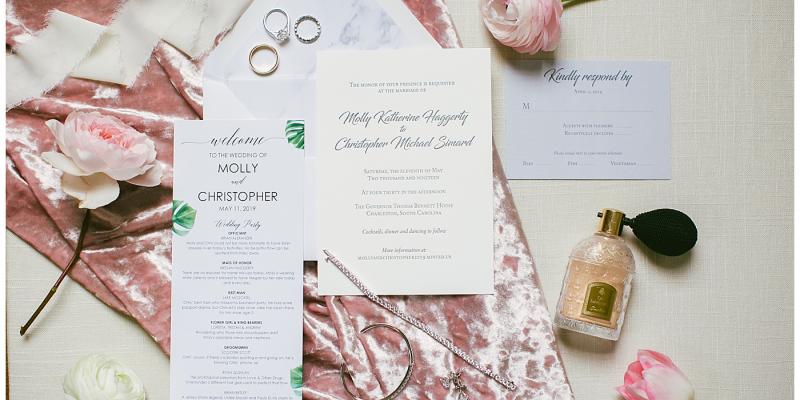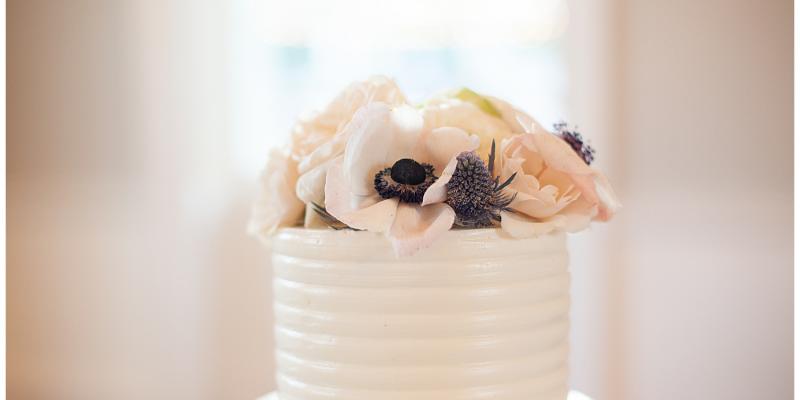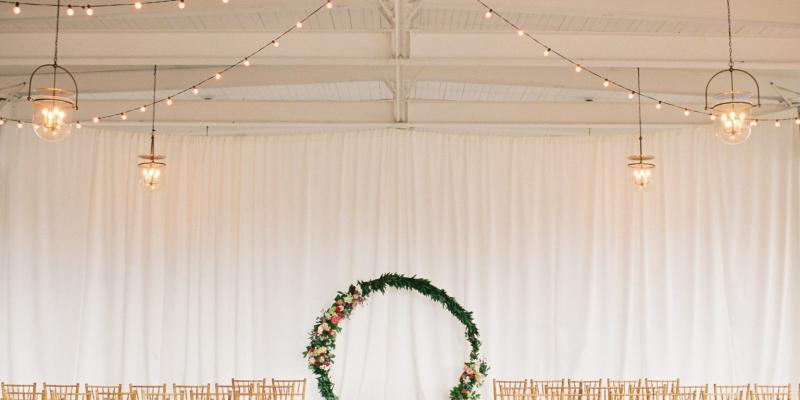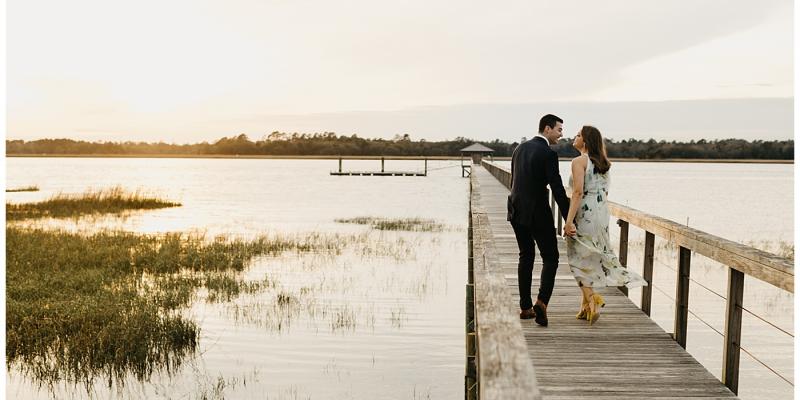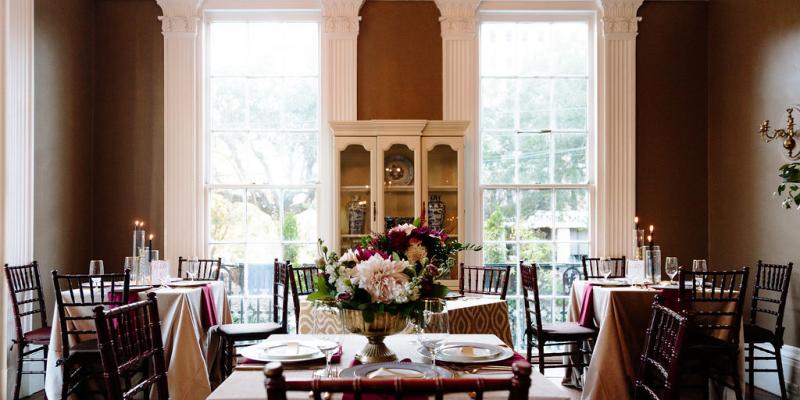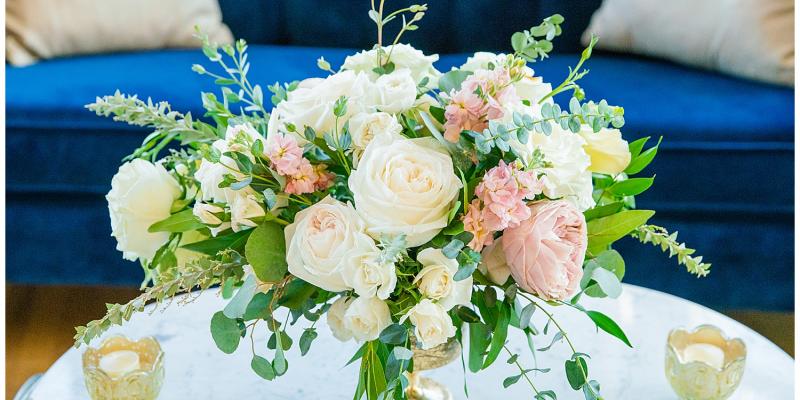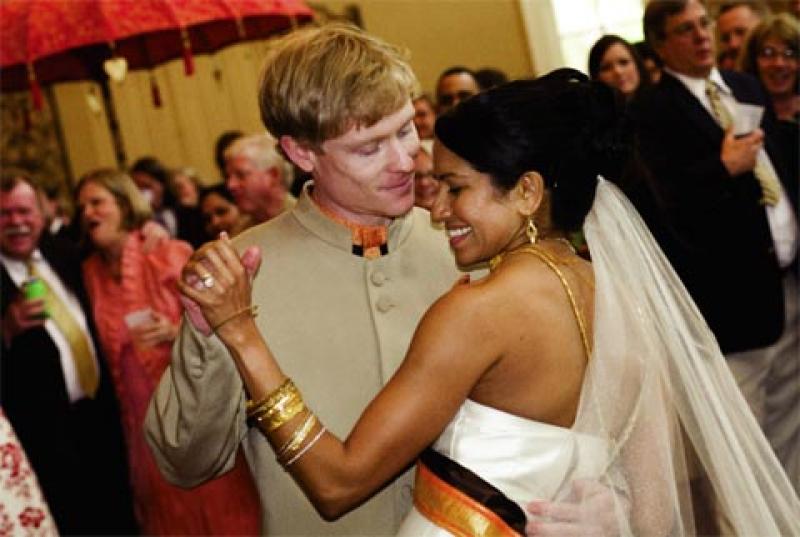
Josia Martin and Cooper Strong When Drs. Rachel Bloom and Milan Patel married at the Charleston Marriott on Lockwood Drive, they wanted to include all of Rachel’s Jewish traditions and all of Milan’s Hindu customs in their celebratory weekend. Thus Elyn Rahman of A Charleston Event & Bridal Library planned a wedding extravaganza culminating in two elaborate same-day ceremonies followed by one big bash. On their wedding day, the Manhattanites (clad in custom-made saris), first knelt under a mandap, the sacred Hindu wedding tent, and were married by a Hindu priest. A few hours later, Rachel donned an ivory silk and taffeta wedding gown and Milan slipped into a tux. The couple then exchanged vows under a chuppah, the traditional Jewish wedding canopy. As Milan stomped the wedding glass, a rabbi sealed their union for the second time that day. To keep the couple’s celebrations cohesive, Elyn stuck with one location and incorporated the same colors throughout both events. Red and gold linens, along with ample armfuls of lush red and white orchids, brightened the Marriott’s ballroom, and both traditional Indian food and American fare were served. At the end of the night, more than 500 wedding guests hit the dance floor and celebrated the union of the happy couple—and their customs. Lowcountry lovebirds Josia Martin (an Indian expat) and Cooper Strong (a local son) also hosted a blended wedding, although they ran into a few planning challenges at the onset. The initial stumbling block occurred with their church. Both attend Christ Our King in Mount Pleasant, but Josia wanted to incorporate a few Indian traditions into the service, and local Catholic church officials were skeptical. Undaunted, Josia met one-on-one with her officiant to explain the spiritual significance of the traditions, and the church changed its position. “My uncle is a Catholic priest,” says Josia. “So he presided over that part of the ceremony and read in my native language, Malayalam.” When everyone retired to the reception at Hamlin Plantation, guests sampled both chicken tikka masala and she-crab soup while lounging on ottomans outfitted with pillows covered with Indian fabrics. In the end, the couple was thrilled with the outcome, and Josia advises brides in similar situations to create celebrations that represent the melding of families. Her top tip? “Anything special to either family should be included in the wedding.” —Bridget Herman Takeaway Tips for Blended Weddings • Successfully blended weddings are all about communication. Begin by discussing your dream wedding ceremony one-on-one with your partner. Together, make a list of “musts.” • Present your ideas to a wedding planner: they’ll help make the celebration cohesive. • Ask your planner for advice on talking to families if this promises to be tricky. • If you have more than one officiant, encourage them to work together while planning the ceremony. • Present your ideas to your families as a united pair. • Print programs that spell out special customs incorporated into the ceremony or ask officiants to explain rituals as they are performed. • Provide translations for foreign language segments so all guests can follow. • Print menu cards that name and describe all foods, local and ethnic.
